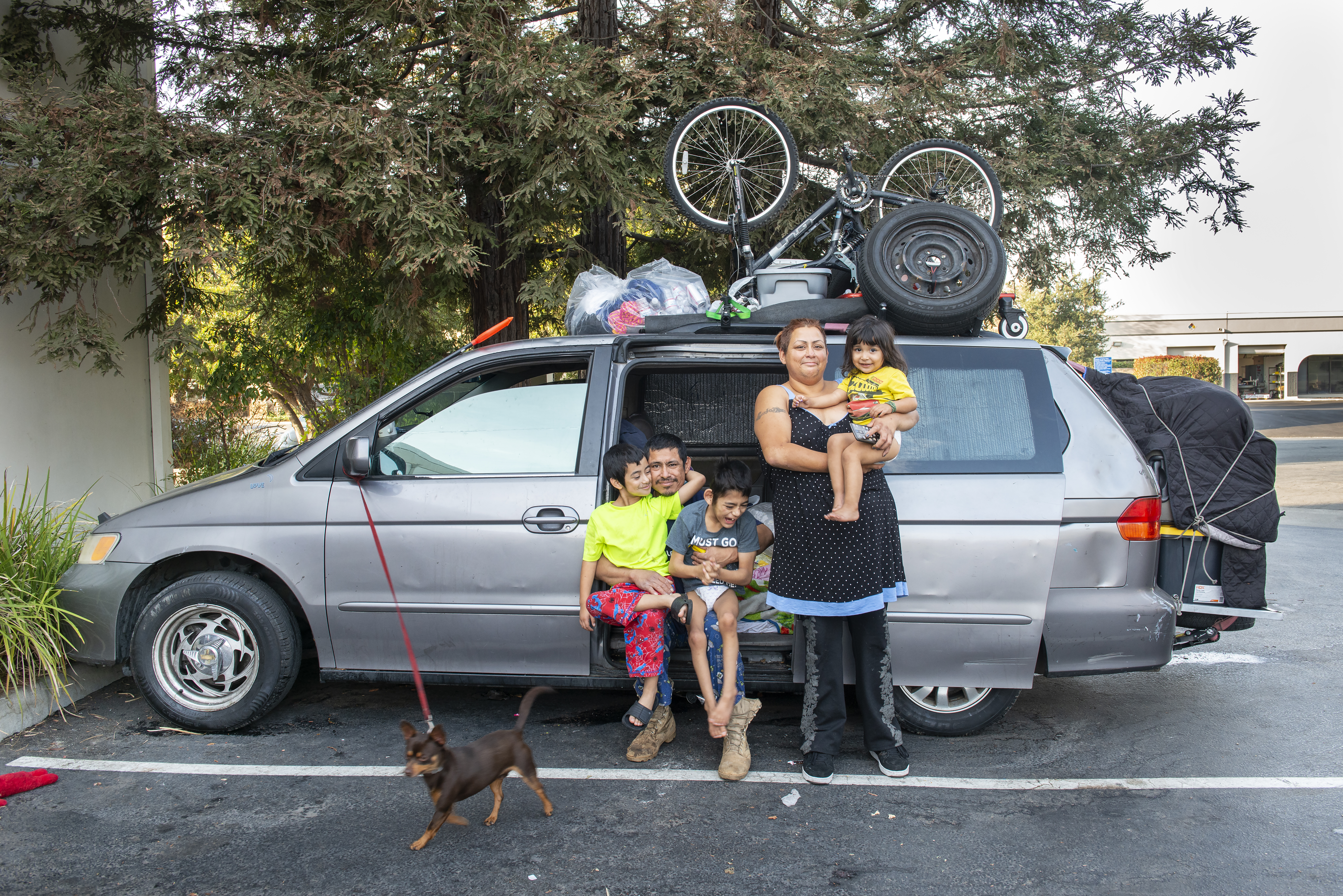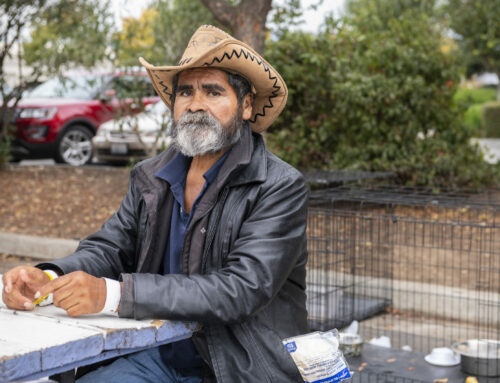Published in the January 30 – February 12, 2019 of Morgan Hill Life

Photo courtesy Kirti Fatania-Bassendine
Carlos and Faviola with their children, Alex (9), Bruce (7,) Destiny (3) and their dog Rocky, live out of their van.
Every two years, the federal government asks cities to do a head count of the homeless. The Point-in-Time Census sent teams of volunteers in Gilroy, San Martin and Morgan Hill Jan. 29 to count the number of people living on the streets, in cars, along creeks, emergency shelters, abandoned properties and other locations not meant for human habitation.
The biennial census will provide vital data to public officials to make decisions and provide funding for a growing challenge for Santa Clara County and other regions of California. In 2015, 6,556 homeless people were counted in the county. In 2017, it rose to 7,394. The survey report from the county released in 2017 showed a disturbing trend for the South Valley region. In 2015, 439 homeless people were counted in Gilroy. In 2017, that number grew to 722 people, a rise of 64 percent. The results were even higher in Morgan Hill where in 2015, 81 homeless people were counted. In 2017, 388 people were counted, a change of 379 percent.
The survey is an imperfect system. Many homeless were not counted for a variety of reasons. Some find shelter in their place of work such as an office. Others sleep at night in a shed or in a friend’s garage. Or they simply were not seen by the volunteers.
The challenge of the homeless is a difficult one for society to tackle. It’s one that impacts the quality of life and public safety for all South Valley residents. We received several emails earlier this month regarding an incident where a woman in San Martin providing food and other items to a homeless man reported she had been raped by him. Sharwian Bobian, 43, a homeless man was arrested by deputies at his encampment across from the San Martin Transfer Station on Llagas Avenue. He was released from jail about 24 hours later after prosecutors declined to charge him. The case continues to be under investigation by the Santa Clara County District Attorney’s office, which is evaluating the evidence.
“The mentally ill homeless population is a challenge,” Assistant District Attorney Terry Lynn Harman said in an email message to concerned residents regarding the incident. “For the most part, there is a startling lack of options for those who are mentally ill and either refuse or are incapable of availing themselves of the limited services available. The criminal justice system is not designed, and therefore ill-equipped, to address this issue in its entirety.”
Residents of San Martin have experienced other situations where homeless people have trespassed on property and slept in barns without permission. We’ve seen the homeless sleeping on the ground in doorways and along the creeks in tent encampments. A large encampment on Cochrane Road adjacent to U.S. 101 was removed Jan. 14 by Caltrans workers.
In November 2016, Santa Clara County voters approved Measure A, the $950-million affordable housing bond which funds a partnership with the county and cities, residents, and the affordable and supportive housing community to significantly address the housing needs of the community’s poorest and most vulnerable residents.
It provides affordable housing for vulnerable populations including veterans, seniors, the disabled, low and moderate income individuals or families, foster youth, victims of abuse, the homeless and those suffering from mental health or substance abuse issues. The bond proceeds are now contributing to the creation and/or preservation of about 4,800 affordable housing units. Measure A is a good start at solving the problem by creating new units for people who are homeless. Locally, it funds the Gateway Project, a senior housing option in Gilroy. There are also a couple of Measure A projects in Morgan Hill.
Although Measure A is helping throughout the county, it’s a limited effort. We need more temporary units, especially here in South Valley where we don’t have a year-round shelter. The Gilroy Armory is open in the winter for between 95 and 130 people to protect them from the cold and rainy weather. On March 31, it’s closed and the people it served need to find other shelter.
Experts on homelessness expect the results of the 2019 Point-in-Time Census to be even higher compared to the previous two surveys. Hopefully the results will encourage residents to ask our elected leaders to find ways to help the men, women and children in Santa Clara County who find themselves without adequate housing.






